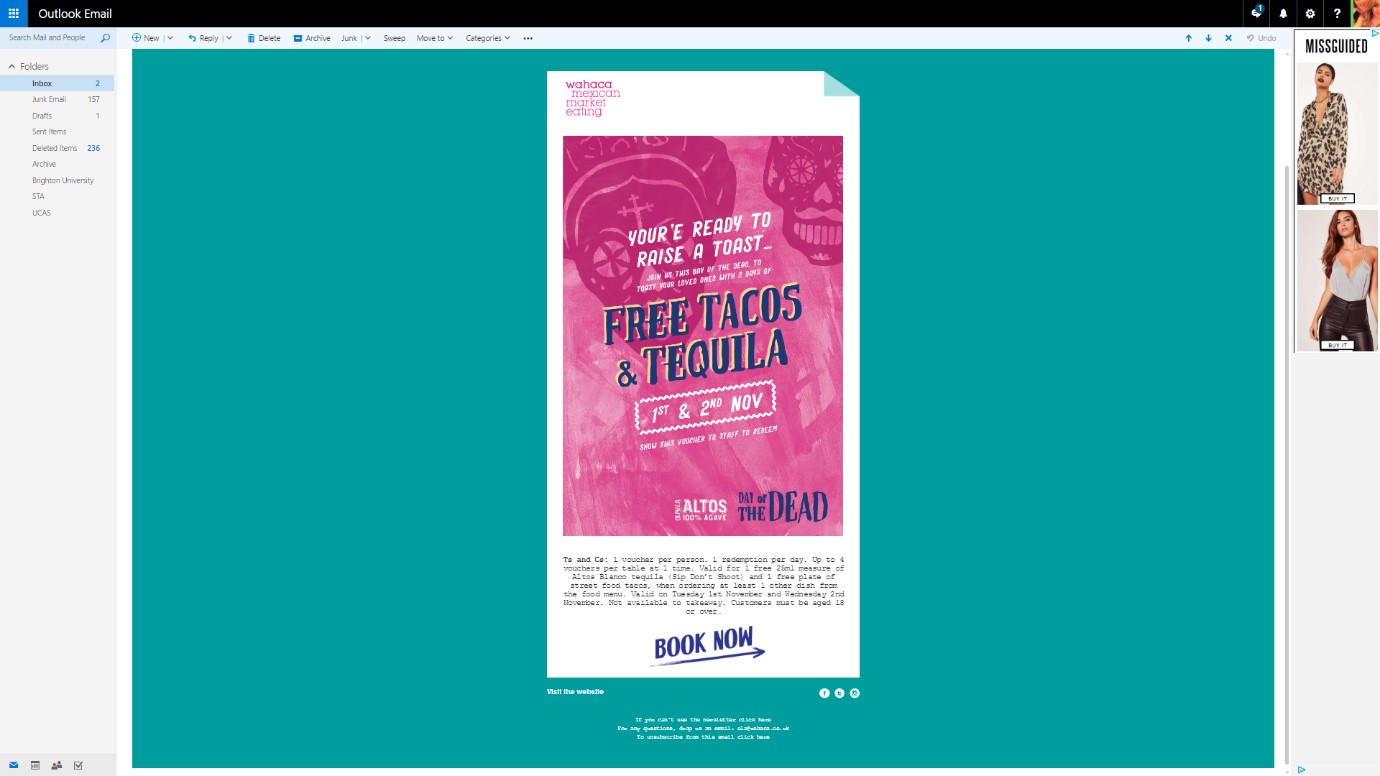Bloggers; building brands to rival celebrities
Bloggers are the third most trustworthy source of information behind friends and family according to an independent survey of UK consumers commissioned by affiliate network, affilinet (Affili.net, 2015) and many believe influencer or blogger marketing to be the next big thing in advertising (adweek.com,2015). Online influence has become a valuable tool for the bloggers of today and whether they are modelling the latest new fashion, attending photo shoots or inspiring people through their every day life, the rise of the everyday blogger should not be underestimated. When someone mentions influencer marketing you automatically think of celebrities and their affiliation with certain products. However alongside the rise in blogging when it comes to influencing purchasing decisions, celebrities simply don’t hold the sway they used to. Bloggers have become powerful influencers, leading to retailers rapidly realising the importance of bloggers and increasingly using them for promotions over your favourite celebrities to avoid becoming obsolete in today’s Instagram and Snapchat-obsessed world
Bloggers uprising
The trend for bloggers has increased significantly over recent years; today bloggers tend to make use of a wide variety of social networking channels to communicate with their followers and engage online through sites such as Facebook, twitter and Instagram. Blogging is no longer simply about posting an article and watching the comments appear. Bloggers are now posting honest and frank reviews on beauty products, lifestyle changes and fashion, leaving brands open to any form of criticism, meaning partnerships with bloggers would be beneficial to brands in 2017. The purchase behaviour of today’s consumers is increasingly influenced by reviews over traditional forms of advertising, and by participating in blogger outreach campaigns, brands can influence the social conversation around their product offering.
Recently brands have started paying attention to these ‘influencers’ and rightly so, as they should be a crucial part of their marketing and communications strategy, a blogger is the mutual friend connecting your brand with your target consumers (Matthews, 2013). According to Fashionista, a number of bloggers have signed contracts with prestigious brands as a result of their fashion content creation and overall influence, by merging online and offline worlds, they’re building brands to rival celebrities. Emily Schuman (Cupcakes & Cashmere), for example, signed a deal with Estee Lauder, and Elin Kling (styled by kling) cooperates with H&M, Urban Outfitters and Gap on several campaigns and projects.
The downfall of the celebrity influencer
Brands using celebrities are often hoping for an aspirational connection, even though the lifestyle of a Hollywood star or famous athlete isn’t particularly relatable for most of us. Bloggers, on the other hand, represent a unique intersection of celebrity and “person like me.” When they talk about a product, their audience can relate to the experience. Instead of following suit with traditional advertising techniques, many fashion brands are adopting novel ways of collaborating with influencers to expand brand recognition and promote sales. Consumers no longer feel the same attraction towards celebrity-endorsed commercials overflowing with glamour and luxury as they seem too good to be true. Now, customers look towards a more down to earth pool of inspiration — photographers, Instagram stars, Viners, Youtube celebrities, SnapChat personalities, and these influencers are closer to our lives, which makes the fashion products they are promoting appear more attainable.
So why do bloggers work so well?
Likability: Bloggers are usually chatty and friendly people. They have likeable personalities and many viewers feel like their friends – with their honest opinions and true to life flaws.
Similarity: Consumers are more relatable to the everyday person. They don’t have flawless skin and they aren’t all size 8 skinny models. This authenticity makes them relatable.
Attractiveness: Of course there are many bloggers who share the attractiveness of our favourite celebrities, however bloggers’ down to earth personalities make them relatable as well as pleasing to watch.
Expertise: Bloggers ensure they do their research online, get invited to press trips to see new collections exclusively and test out countless launches, and therefore are the perfect source for up-to-date accurate information in their expertise
Trustworthiness: Sponsored posts are usually clearly marked (with an #ad hashtag) and most bloggers only talk about products they genuinely love; viewers can trust bloggers’ recommendations.
In contrast, celebrities score highly on the attractiveness front of course. But bloggers clearly win when it comes to similarity, likability, expertise and trustworthiness. Consumers are able to relate more to the everyday person and therefore the use of bloggers over celebrities in campaigns offers consumers a more believable and truthful review of a company. Companies are now seeing this relatability, and along with the following on social media which these bloggers collectively have access too, and how this can lead to a positive relationship for both blogger and brand they their research online, get invited to press trips to see new collections exclusively and test out countless launches, and therefore they are the perfect source for up-to-date accurate information in their expertise
References
Adweek.com. (2015). 10 Reasons Why Influencer Marketing is the Next Big Thing. [online] Available at: http://www.adweek.com/digital/10-reasons-why-influencer-marketing-is-the-next-big-thing/ [Accessed 17 Apr. 2017].
Affili.net. (2015). Bloggers trusted more than celebrities, journalists, brands and politicians. [online] Available at: https://www.affili.net/uk/about-affilinet/press-and-news/2015/bloggers-trusted-more-than-celebrities-journalist [Accessed 3 Apr. 2017].
Cupcakes & Cashmere. (2012). Estée Lauder and Cupcakes and Cashmere. [online] Available at: http://cupcakesandcashmere.com/beauty/estee-lauder-and-cupcakes-and-cashmere [Accessed 5 Apr. 2017].
Matthews, K (2013). The Definitive Guide to Influencer Targeting. [online] Available at: https://blog.kissmetrics.com/guide-to-influencer-targeting/ [Accessed 17 Apr. 2017].
Worn Through. (2015). You Should Be Reading: Fashion Blogging and Vlogging. [online] Available at: http://www.wornthrough.com/2015/03/you-should-be-reading-fashion-blogging-and-vlogging/ [Accessed 17 Apr. 2017].





